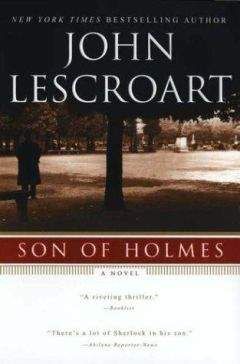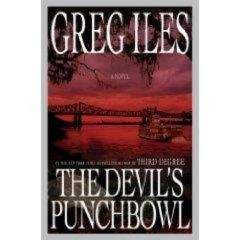Linda Castillo - Sworn to Silence
“How can you be so sure?”
“The Roman numerals carved into the torsos of the vics was never made public.” He looks at me over the tops of his glasses, his expression telling me that should be obvious.
“The information could have leaked.”
“If that was the case, you would have seen it in the news.”
He’s right, but I say nothing.
He shakes his head. “The similarities are too striking. This is the same guy.”
“How do you explain the hiatus?”
“He changed locales. Look at the gap in numbering.” He studies me with those intense eyes. “Have you plugged any of this into VICAP?”
VICAP is the acronym for the FBI’s Violent Criminal Apprehension Program. It’s a database that matches major crimes by detecting similar signature aspects and patterns of modus operandi. We both know I should have already done this. Tomasetti’s wondering why I didn’t.
“I was hoping you could help with that,” I say.
“I’ll get this signature plugged in right away.”
“I’ve got queries going in OHLEG as well,” I add.
“While we’re on the subject of resources, is there a specific reason why you didn’t contact the FBI?”
There’s no recrimination in the question. Just simple curiosity. As if I might have a good reason for not doing what I should have. Of course, I don’t. He’s backed me into a corner I can’t get out of unless I lie. “Some of the town council members were concerned about tourism. They didn’t want the national media involved.”
“You don’t seem like the kind of cop to buckle under that kind of pressure.”
Because I don’t want to dig this particular hole any deeper, I look down at the file. But my heart is pounding. I feel his eyes on me and I know he’s making judgments. About my competence. About me. “You got a theory on the hiatus?” I ask after a moment.
“The numbering suggests there are other victims we don’t know about.” He taps the folder with his finger. “This guy isn’t fucking with the cops, and I don’t believe he stopped killing. He doesn’t have that kind of control. I think for the last sixteen years, he’s killed somewhere else. Unless he was somehow incapacitated. Jail time. Hospitalization.”
I glance at the papers in front of him. He’s already filled two pages of the pad. His handwriting is slanted and small. “Have you begun a profile?”
“Preliminary.” He recites from memory. “He’s a white male between the age of thirty-five and fifty. He works full-time, but his schedule is flexible. He’s considered successful and is probably in a position of authority. He’s controlling and impulsive, but he controls his impulses to a degree. He’s married, but his relationship is troubled. May have teenaged or grown children. He’s considered a good father. His wife may or may not know he’s got a dark side. If she does, she doesn’t know the degree. She doesn’t know he kills. No one suspects him. He may be impotent and may take medication. Violence excites him a lot more than sex. He derives sexual gratification from inflicting pain. Torture is the overriding source of his compulsion. Killing is a secondary end result. It’s those final moments of life that really get him off.
“As a kid, he may have been cruel to animals, or he may have gotten into trouble for killing them. As a young man or teen, he may have had some psychological problems. Those problems may or may not have been diagnosed. He has an addictive personality, but he’s good at hiding his compulsion. He’s a classic psychopath. He’s egocentric. He probably has a large collection of pornography, particularly S&M-type stuff. He’s probably into bondage and may have movies or video on his computer. He spends a great deal of time fantasizing before he actually commits the act. He enjoys the planning stage. Once he’s done the murder, he spends a good bit of time reliving it.”
If we were dealing with any other case, I might agree with the profile. I might even be impressed. But none of his profile points describe Daniel Lapp.
Tomasetti hands me the pages. “It’s all preliminary and subject to change.”
Nodding, I turn my attention to the profile. A chill passes through me as I read the particulars.
• Subject is physically strong. He may have a job that requires strength or he may work out regularly.
• He has a controlling personality and may act out in anger when things are out of his control.
• He wants to be seen as attractive. He is meticulous with regard to his appearance and makes an effort to appeal to women.
• He presents himself as charming and nonthreatening.
• He is comfortable around women. He interacts with women and was probably raised with females in his home e.g. mother and/or sisters.
• He is in a stable relationship, but the relationship is troubled. He is angry about the failing relationship, but feels as if saving it is out of his control.
•
He can be spontaneous if an opportunity presents itself, but prefers planning.
• He is a newshound and follows the case closely. He enjoys media attention.
Once again I find myself thinking of Daniel Lapp. “I don’t think we should limit the investigation by excluding possible suspects who don’t meet this criteria.”
“Usually this is where people tell me I’m pretty good at what I do.”
“I didn’t mean to offend you.” I hand him the sheet.
“You didn’t.” He takes the paper. “What don’t you agree with?”
“I just don’t think we should exclude anyone this early in the game.”
He gives me an odd look, as if he’s trying to figure me out. I avoid his eyes by looking down at my notes. “This guy is obviously in a period of escalation,” I say. “Do you think there was some kind of trigger?”
“I would guess something difficult for him has happened in his personal life. Possibly involving a woman. A wife or girlfriend. He doesn’t deal well with rejection and could be retaliating.”
“He hates women?”
“He hates them, but he desires them. In deviant ways.”
“How does he choose his victims?” I say.
“A woman catches his eye. He spends some time watching her. A few days. A week, maybe. He learns her routine. He figures out when she’s vulnerable. When he can get to her.”
“I’ve limited the questioning of witnesses to the hours before the victims’ disappearances. If this guy stalked his victims for days before abducting them, we would be better served talking to everyone who had contact with Amanda Horner and Ellen Augspurger four or five days before they disappeared.”
“I agree.”
“Does a particular kind of woman appeal to him?”
“Both victims have been young, in their early to midtwenties. Attractive. Petite.”
“Applies to a lot of women in this town.”
He nods. “Keep going.”
“Where does he kill?” I’m thinking aloud now. Random thoughts. Questions. Brainstorming.
“He needs privacy,” he says. “A place where no one can hear him.”
“Basement.”
“Deserted home or building.”
“Soundproof room.”
He throws up a roadblock. “If he has a wife, she would know about the room or basement.”
“Unless he has property somewhere else. Off-premises. Rental property.” I think about that a moment. “Why do you think the wife isn’t involved?”
“If she has a dependent personality and he controls her, she could be,” he concedes. “But it’s not likely. These murders are too brutal. This guy doesn’t hold back. He’s alone. Uninhibited. Living out his fantasy in absolute privacy.”
Silence falls. We look at each other. Tomasetti appears excited. A bloodhound that’s caught a scent.
“Assignments,” he says after a moment. “I need to know who’s doing what. Your officers. Sheriff’s office. So we don’t waste manpower repeating ourselves.”
I flip through my notebook, locate the page where I’ve jotted assignments. “I’ll have Mona type this for you.”
“I’ll finish this profile tonight.”
I nod. “Hand it off to Mona in the morning, and she’ll disperse it.”
He picks up the Slaughter house Killer file. “Can I take this?”
“As long as you bring it back in the morning.” I don’t ask him when he plans to sleep.
He rises. I catch a glimpse of a pistol in a shoulder holster when he stretches. A Sig Sauer semiauto. It strikes me that, for a cop, he knows how to dress. Pinpoint oxford shirt. Expensive tie. Nicely cut suit. Details I shouldn’t be noticing.
“See you in the morning.” He starts toward the door.
I watch him disappear down the hall. We didn’t accomplish much, but the profile is a start. I think I’ll be able to work with him. He’ll be an asset to the team. I hope it’s enough.
I look out the darkened window at the deserted street beyond where snow sparkles beneath the streetlights. I think about the killer and wonder if his dark hunger torments him tonight. I wonder if he’s out there, looking for his next victim. I wonder if he’s already picked her out.
CHAPTER 19
The Willowdell Motel was a dump, but then John hadn’t expected much. The management made an attempt to capture the quaint atmosphere of an Amish tourist shop, but only achieved Midwestern tacky. Second-rate carpet. Ugly bedspread. Peeling wallpaper in the bathroom. A heater that blew tepid air smelling of cigarette smoke and mildew. But the place was clean; a bed and a shower were all he needed. The TV worked, so he tuned it to the Fox News Channel and broke the seal on the bottle of Chivas.
He poured three fingers into a plastic glass and chugged half while his laptop booted. It was too late to call Harry Graves, his contact at CASMIRC, the FBI’s Child Abduction and Serial Murder Investigative Resources Center, so he drafted an e-mail instead and made a mental note to touch base with him first thing in the morning. He poured a second glass of Chivas as he navigated the FBI’s Web site. VICAP wasn’t web-based, but he could access the forty-six page questionnaire online. Finding a signature match was a long shot, but sometimes long shots paid off. If a similar crime had occurred anywhere in the United States—and had been entered into VICAP—they might catch a break.
It took him an hour to fill out the form. Once the inquiry was sent, he opened the Slaughter house Killer file and began to read. He scribbled notes and tried to lose himself in his work, something that used to come with the ease of breathing. No more. Some days there was no escape from the dark places his mind chose to dwell.
John didn’t take in the details of the murders with the keen and unbiased eye of the cop he’d once been, but with the abject horror of a man intimately acquainted with violent death. His past wasn’t the only thing on his mind tonight. More than once he found his thoughts straying to Kate Burkholder. He’d worked with a lot of cops over the years. A female chief of police was rare, especially in a small town. An Amish cop was unheard of. Maybe that was why he found her so damn interesting.
She was low-key—a trait he’d learned to appreciate when it came to women cops. She was attractive in a girl-next-door kind of way. Dark brown hair cut short. Eyes the color of a mink coat. A pale complexion that made for a striking contrast. An athletic build. A nice mouth. John didn’t have anything against female cops, but he’d known enough of them over the years to know that, like their male counterparts, most were bad relationship material. Not that he was in the market. He was as fucked up as a man could be and still be walking around. From all appearances, Kate was too smart to get tangled up with a head case.
He’d just shut down the laptop when the phone rang. He caught it on the second ring with a rough, “Yeah.”
“Agent Tomasetti?”
Surprise rolled through him when he recognized the mayor’s voice. “What can I do for you?”
“I’m sorry to be calling so late. Did I wake you?”
“No.”
“Good. Good.” He cleared his throat. “There’s been a development I wanted to discuss.”
“I’m listening.”
“I had a very . . . disturbing meeting with David Troyers this eve ning. He’s the elder Amish bishop.”
John wondered what the hell this had to do with him. “Go on.”
“Apparently, someone left an anonymous note on the bishop’s door.”
“What kind of note?”
“Well, it’s about Chief Burkholder. And it’s quite troubling.” Paper rattled on the other end of the line. “I have it right here. It says: ‘Chief Katie Burkholder knows who the murderer is.’ ”
John let the words run through his head a couple of times. “That certainly qualifies as troubling. What do you want me to do about it?”
“I’m not sure. I thought I should tell someone in law enforcement.” He paused. “Why would someone send a note like this?”
“Maybe it’s a hoax.”
“Maybe.” The mayor paused. “I was wondering if you could look into it. You know, anonymously.”
Tomasetti considered that, felt his cop’s curiosity stir. “I’m not exactly on her list of favorite people. She’s not going to talk to me.”
“Perhaps you could just . . . observe, make an assessment over the next few days.”
“Have you discussed the note with anyone else?”
“No.”
“Keep it that way. I’ll see what I can do.” John glanced at the clock. After two A.M. Too late to do anything tonight. “How many people have handled the note?”
“Bishop Troyer. Me.”
“Put it in a brown paper bag and seal it. I’ll check it for prints.”
“I’ll get it to you first thing tomorrow.”
They said their good-byes and John hung up, troubled by this new development. The case was complicated enough without the cops keeping secrets. Who would send a note like that and why? Did Burkholder know more about the case than she was letting on? Or had some idiot decided it might be fun to play head games with the cops?
What bothered Tomasetti about the latter scenario was that the note had been sent to an Amish bishop. The Amish weren’t known for their practical jokes. Painters Mill was a small town where everyone knew everyone else. Was it possible Kate Burkholder knew the killer? Was he Amish? Was she protecting him because of that? John couldn’t see her risking lives to protect some psycho. But he knew from experience some loyalties supplanted even the most fundamental ethics.
That was when he realized that wasn’t the only thing bothering him about Kate Burkholder. Faced with a difficult, high-profile case, she should have turned to outside resources right off the bat. Initially, he’d assumed she didn’t want some outsider encroaching on her case. But after meeting her, he’d realized she wasn’t the territorial type. Why hadn’t she asked for help? The question niggled at him like a migraine digging into his brain.




